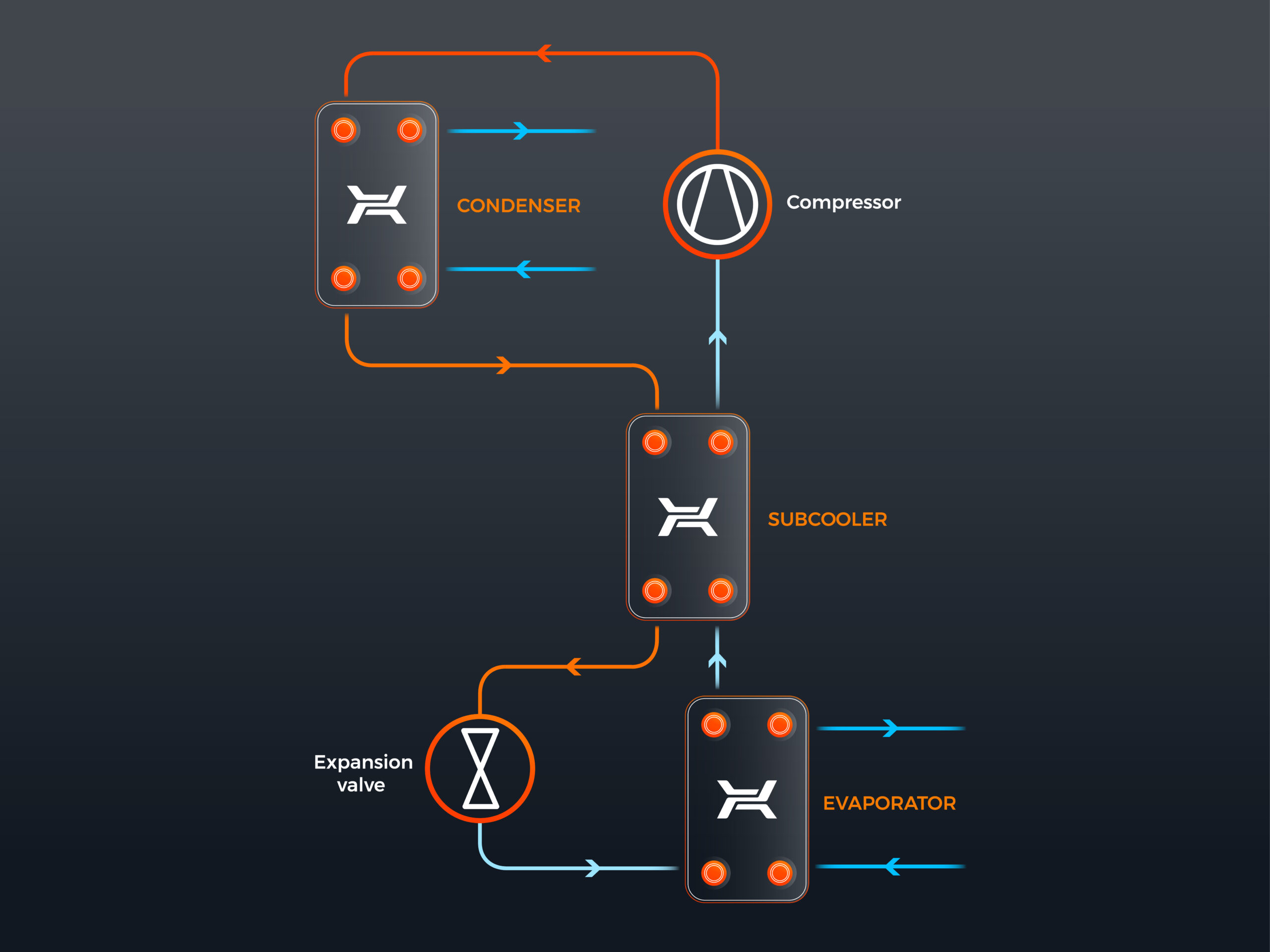Heat recovery
Re-use of heat (thermal energy) from hot waste water, gases, ventilation or sewage is called heat recovery.

Re-use of heat (thermal energy) from hot waste water, gases, ventilation or sewage is called heat recovery.

Constant increase of energy and fuel prices calls for energy-saving technologies and for increasing effectiveness of manufacturing processes through recovery of energy from systems. The most significant savings may be obtained from manufacturing plants that are consuming large amounts of energy, water and heat in their processes.
Waste heat in the form of vapor or hot water, oil or air is a byproduct of almost any production cycle. With the BPHE exchanger, it is possible to recover and re-use the heat for other purposes, contributing to lowering carbon dioxide emissions and bringing significant savings for the manufacturers. Modern solutions for heat recovery systems include rotary regenerators, recuperators, heat exchangers or heat pumps.
One of the ways to increase the performance of cooling systems is to use heat exchangers as subcoolers. By decreasing the condensate temperature before expanding and routing it to the evaporator, it is possible increase performance and cooling power. The heat conveyed to the environment in the intercooling phase is re-introduced to the cooling circuit. An additional advantage of intercooling is the possibility to allow pressure drops in the line feeding the cooling medium from the condenser to the expansion valve without creating vapor.
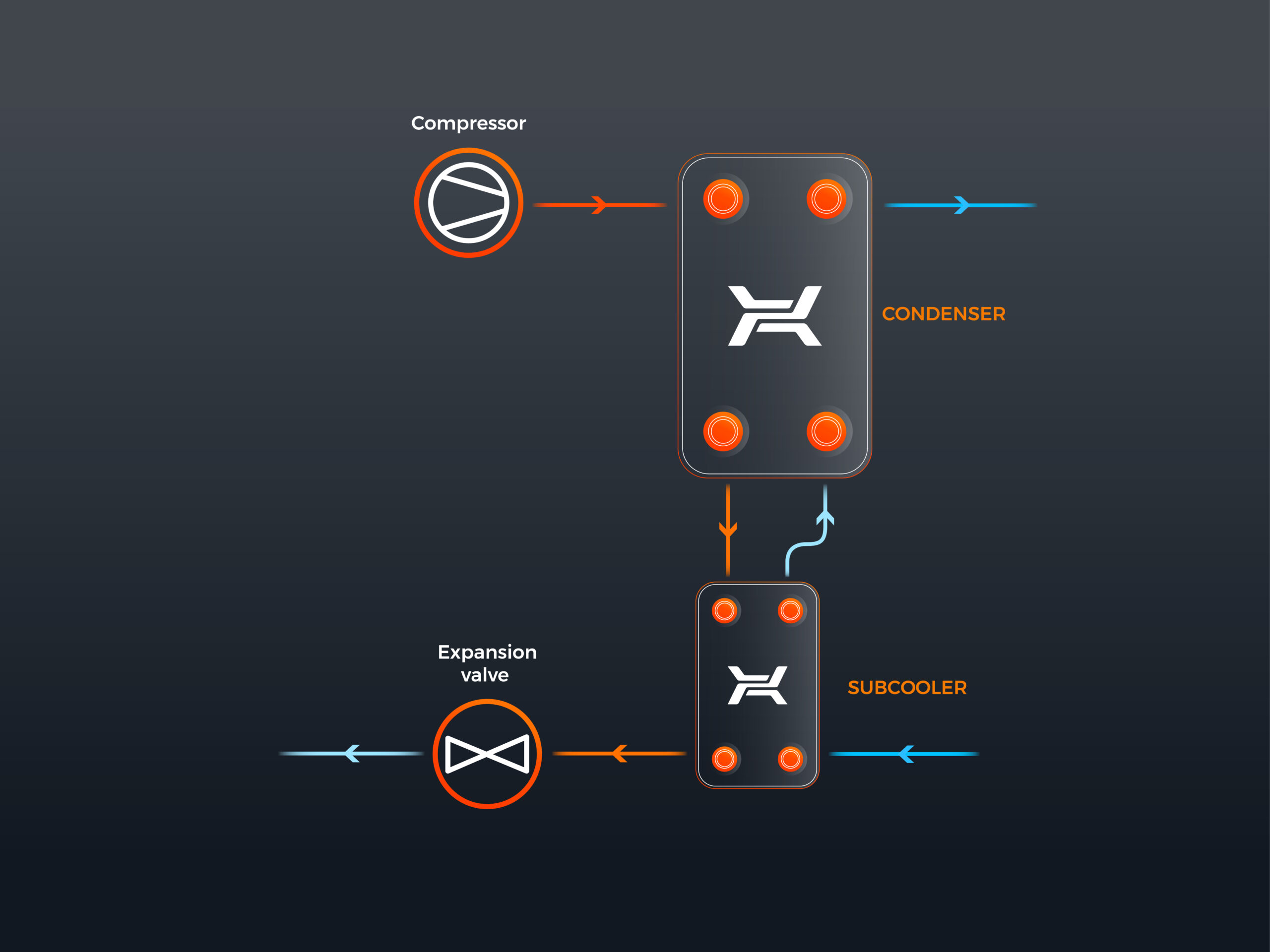
Brazed plate exchangers may be also used as economizers (regenerative subcoolers) with the aim to additionally cool down the cooling medium. The result is a two-stage compression effect while using a single compressor, thus increasing the overall performance of the system. In systems with enhanced vapor injection (EVI), the design of the compressor must enable vapor injection in order to achieve higher input temperature. As a result, the compressor requires less power, leading to decreased system operating costs.
Systems with an economizer require additional components, such as pipelines and compressors with an additional intermedia pressure input (axial compressor/ screw compressor). High investment costs related to installation requirements are decisive for using such installations only in large cooling systems. If a system with an economizer uses two compressors, we have a two-stage system.
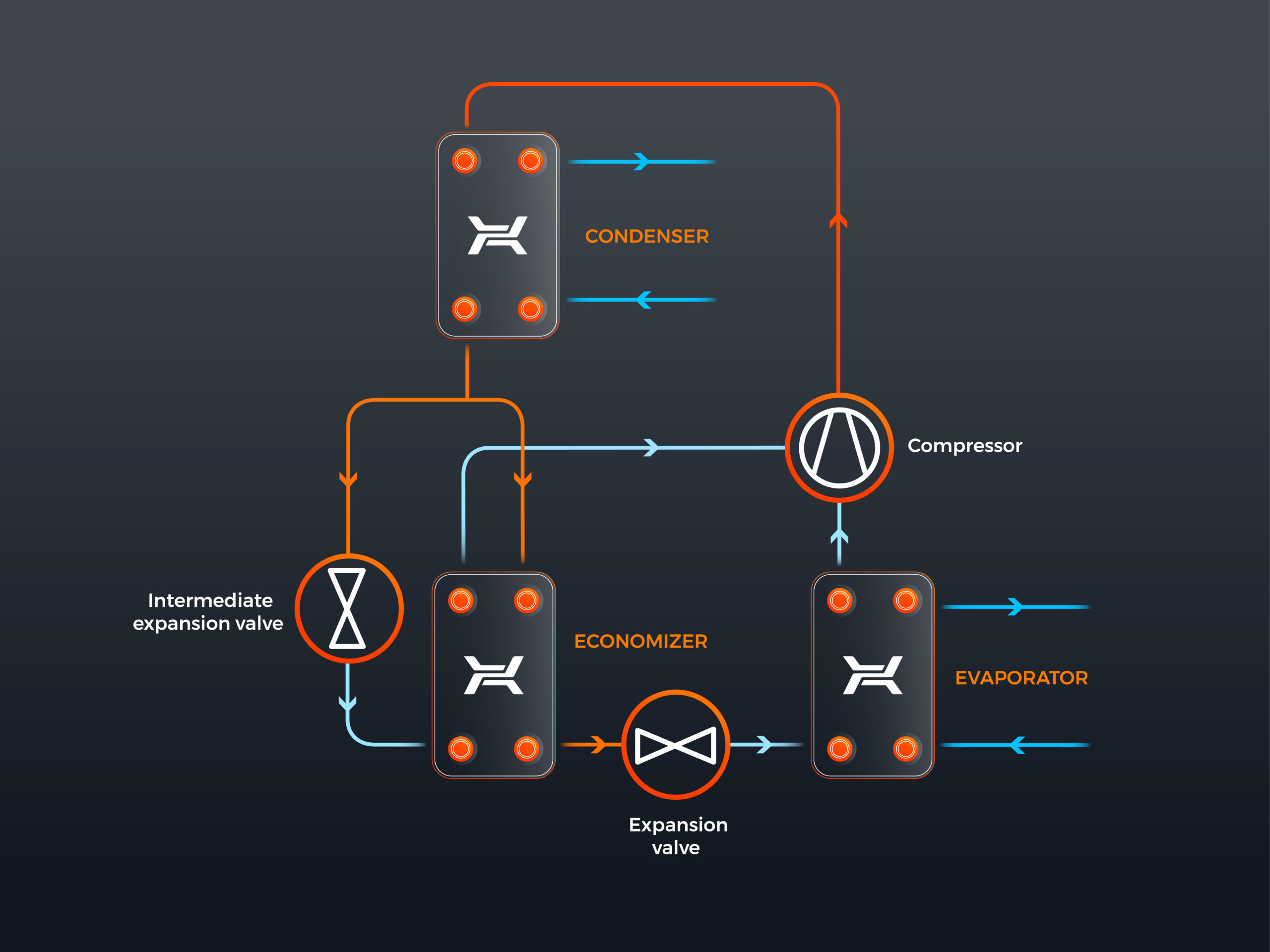
Cooling systems fitted with air-cooled condensing units produce waste energy by dumping condensation energy into ambient air. By erecting an additional heat exchanger upstream the condenser, some waste energy can be used as warm sanitary water, hot process water, cleaning water or water for heating rooms.
Desuperheater in the form of a brazed plate heat exchanger, located between the compressor and the condenser, enables utilizing the high-temperature energy of the superheated cooling medium. Using an additional exchanger consisting of three areas (intercooling, condensation and heat recovery from supercooling) in a cooling structure enables heating domestic hot water to higher temperatures than it would have been possible in a typical condenser.
Depending on the operating conditions, the desuperheater may condense the cooling medium. In such a case, the liquid must be carried to the condenser located below the desuperheater to avoid condensate buildup in the desuperheater. In practice, however, they are installed above. The cooling medium in the brazed plate exchanger is then carried away by the vapor jet. A properly designed connecting pipe between the desuperheater and the condenser (for gas speeds between 5–10 m/s) will help avoid liquid condensate buildup.
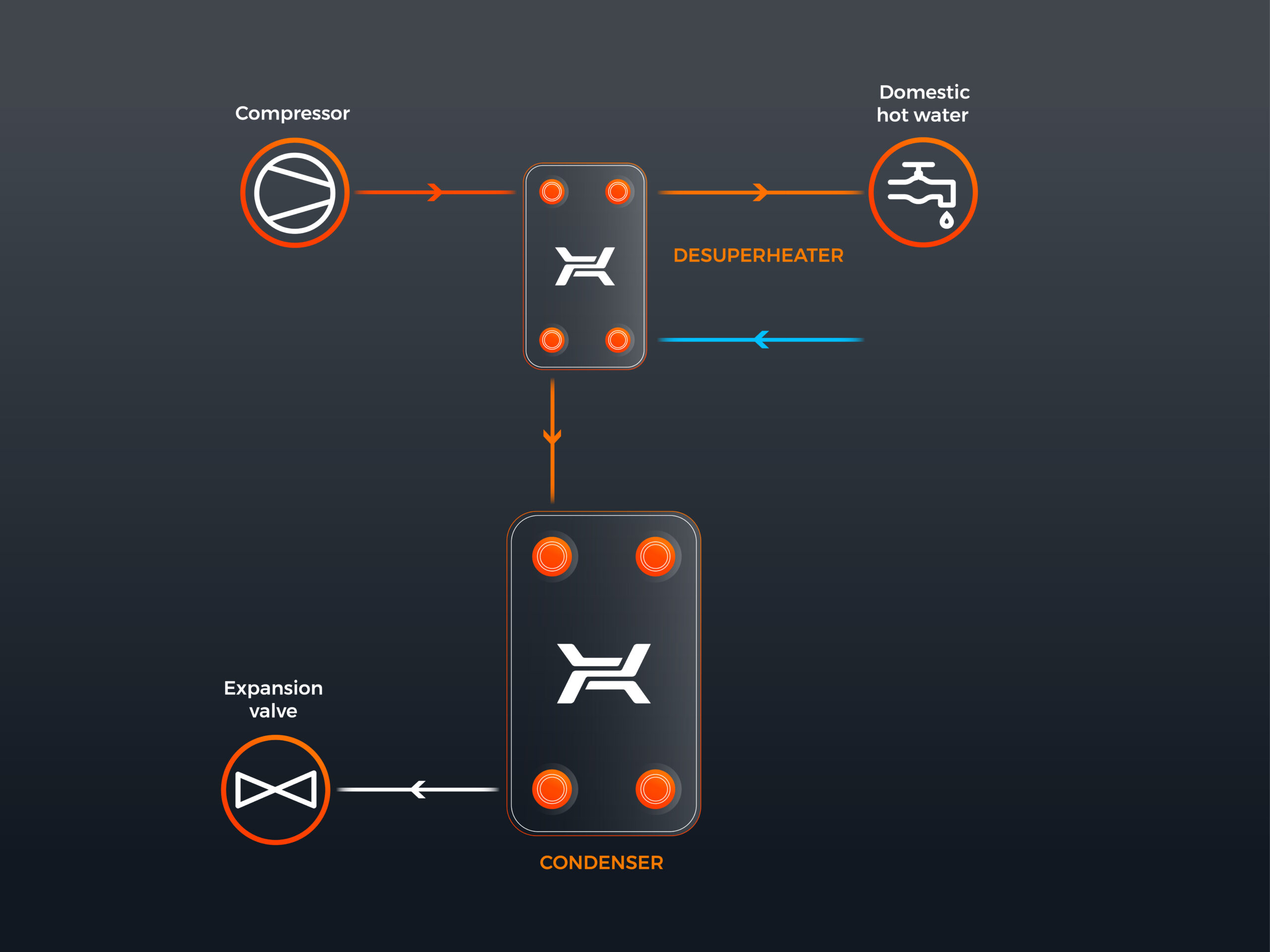
ORC systems are named after the Organic Rankine Cycle. In ORC installations, water vapor is replaced with organic media that evaporate in a relatively low temperature (and pressure). This allows to use low and medium temperature heat sources in ORC circuits. Waste heat from the cooling circuit (condenser) is used for generating electricity.
The principle of operation of ORC systems is similar to the one of steam turbines in power plants. A liquid cooling medium is pumped to the evaporator where the medium is evaporated. Working medium vapors are routed to a turbine coupled with a generator through a shaft. The energy of the working medium propels the rotor blades, enabling electricity generation. After passing through the turbine, the working medium goes to the condenser. In condensed form, it is pumped to the evaporator, where the cycle starts over again. The performance of an ORC system may be additionally boosted by fitting a recuperator. Superheated steam leaving the turbine transfers heat to the liquid that is generated as a result of further condensation of the vapor in the condenser.
In the past, optimizing ORC systems required expensive solutions. Nowadays, most problems can be solved with heat exchangers. Their features ensure good system performance, as well as reliable and quiet operation. An organic medium with an evaporation temperature lower than that of water allows to obtain electricity from burning biomass, biogas or from industrial waste heat.
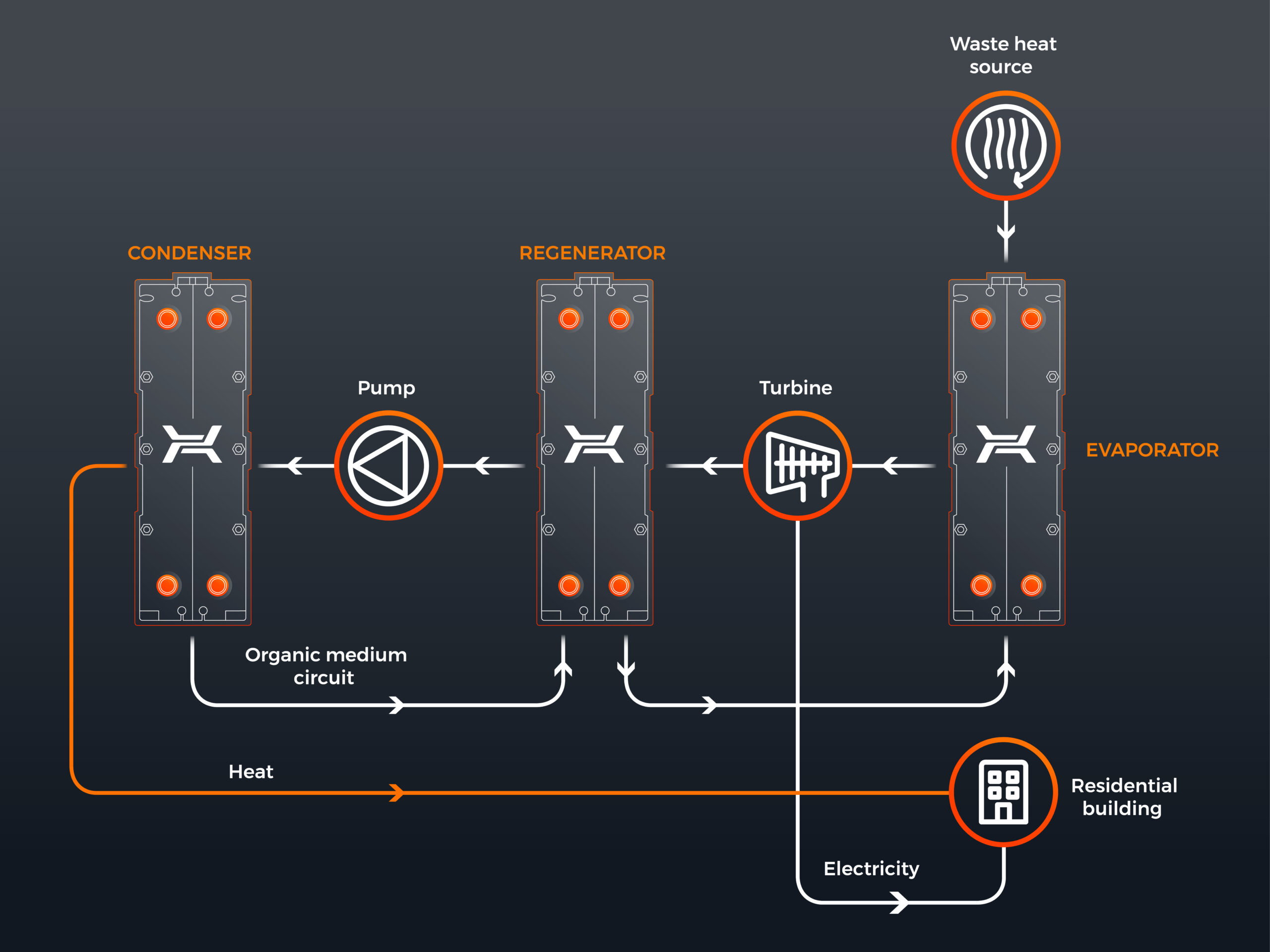
Hot condensate liquid from the condenser may be used for superheating cold vapor from the evaporator through a heat exchanger. a brazed plate exchanger provides a higher grade of condensate subcooling downstream the condenser. This reduces vapor contents in the medium downstream the expansion valve, which in turn enhances the medium distribution in the evaporator, thus increasing its effectiveness. Additionally, the exchanger superheats the vapor downstream the evaporator, minimizing the probability of liquid reaching the compressor. The heat exchanger serves as a subcooler with a vapor superheating feature downstream the evaporator.
